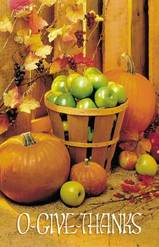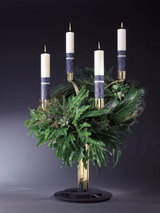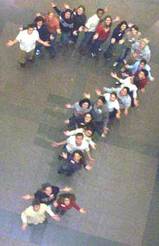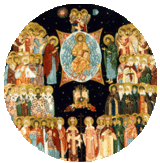 On Thanksgiving Day many churches offer a very traditional worship service: Psalm 100, a litany of thanksgiving, “Come, You Thankful People, Come.” On a day when we look back with gratitude at God’s good gifts to us, it makes sense to make use of the work and wisdom of our forebears and to worship using that which is tried and true. Other congregations seek innovation: pilgrim puppets behind the pulpit, prayers of thanks colored (not written) in crayon on scraps of paper and dropped in the offering plate.
On Thanksgiving Day many churches offer a very traditional worship service: Psalm 100, a litany of thanksgiving, “Come, You Thankful People, Come.” On a day when we look back with gratitude at God’s good gifts to us, it makes sense to make use of the work and wisdom of our forebears and to worship using that which is tried and true. Other congregations seek innovation: pilgrim puppets behind the pulpit, prayers of thanks colored (not written) in crayon on scraps of paper and dropped in the offering plate.
Our culture craves novelty, which may explain—but doesn’t necessarily commend—our thirst for it. A more laudable urge is to offer in our worship not a stale tradition, repeated out of habit, but something original: our creative expression, our prayers and words and music, our very selves. We want to offer something fresh and new. But must it be an either/or choice? Many congregations are very successful in their efforts to examine the tried and true traditions (often more true than actually tried), identify the best in them, and then freshen them in ways sensitive to their contexts. Here are a few ideas...
***
Call to Worship
Psalm 100 is just the right Scripture to use as a call to worship on Thanksgiving Day. It’s familiar, and it summons God’s people both to worship and to give thanks. But the elevated diction of most psalm translations, and the formal quiet out of which calls to worship are often spoken, can diminish the psalm’s affective energy. To generate enthusiasm, some congregations bring out their best thespian/liturgist to lead the reading with strong voice and grand gesture. But the right song might work as well—if not better—to encourage rather than coerce the congregation into eager, participative praise. For example, teach and then sing the song “Come, All You People” (it can be found in the hymnal supplement Sing! A New Creation) at the very start of the service, and let the energy leak into the responsive reading of Psalm 100 as a call to worship. Let it leak by maintaining a soft percussive pulse, and maybe a low bass drone, throughout the speaking. Then reprise the song afterward, and the service will have begun with faithfulness and vigor. (See the music here, hear it here.)Continue reading...




